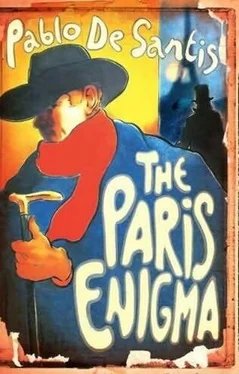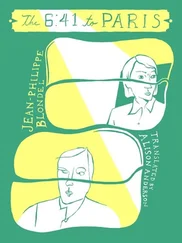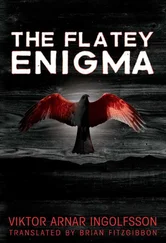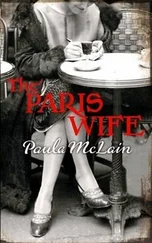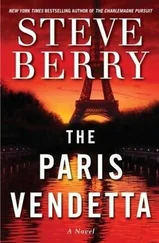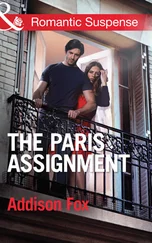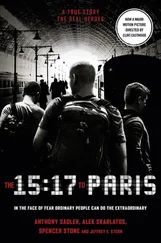Louis Darbon made a general gesture of farewell. Arthur Neska, his assistant, moved to follow him, but Darbon made a spirited gesture that told him to stay.
“Darbon is leaving, but he wants to find out every word Arzaky says,” said Baldone into my ear.
A gentleman dressed in a white suit with bright blue details, more appropriate to a theatrical costume than to a detective’s work clothing, came forward. He clapped with reprehensible affectation; behind me I heard the acolytes’ stif led laughter. I gestured to Baldone, silently asking him who it was.
“That’s Andres Castelvetia.”
“The Dutchman?”
“Yes, Magrelli tried to block his acceptance as a full member, but it didn’t work.”
Arzaky gave Castelvetia the f loor.
“If you’ll allow me, gentlemen, I’ll be the first to talk about enigmas. And I will do so, if you’ll forgive me, with a metaphor.”
“Go ahead,” said Arzaky. “Free us from our obsession with invisible clues, cigarette butts, and train schedules. And don’t be embarrassed: during the day we worship syllogisms, but the night belongs to the metaphor.”
Thus spoke Castelvetia:
“There is an oft-used image that best defines our work: the jigsaw puzzle. It’s a cliché, but what is more like our investigations than the patient search for a hidden picture? We put the pieces together one by one, searching for the images or shapes that remind us of other images and shapes. Just when it seems that we are lost, we find the right piece, giving us a f leeting glimpse of the complete image. Who didn’t do jigsaw puzzles as a child? Who doesn’t feel now, while searching in alleys, beneath the moonlight or the green halo of the streetlights, that we are continuing our childhood games? With a board that has grown more complicated and has expanded to fill entire cities.
“I remember the murder of Lucía Railor, a dancer with the national theater of Amsterdam: she was hanged in her dressing room with a prop rope. Prop revolvers don’t fire, but prop ropes hang someone just as well as the real thing. It was one of the few locked-room cases that we’ve had in Amsterdam. The dressing room was locked from inside, the key was in the door. The dancer was found with the rope around her neck and her body was blocking the door. Since no one else could have entered the room, the police supposed that Lucía had hanged herself using the hook where she usually hung her coat; the weight of the body had eventually undone the rope. It was an unusual suicide, but in that period just forming a hypothesis, as mistaken as it might be, was a big step forward for the Amsterdam police. I asked myself the same question as always: if she was killed, how could the murderer have escaped? For days I scoured the room, as if it were an island and I the only inhabitant. I crawled along the f loor…”
“In that white suit?” asked a snide voice I wasn’t able to identify. Castelvetia ignored the comment and continued.
“First I attended to the small things, then to the imperceptible ones, and finally to those that couldn’t even be found with a magnifying glass. I put the pieces together like a jigsaw puzzle: remnants of tulips on the soles of the shoes Lucía wore in the performance, bits of thin glass, loose threads from a cotton rope, a book of poems, in French, by Victor Hugo that Lucía kept in a drawer. And the position of her body, by the door.”
Castelvetia paused, allowing the room to fall silent. I’m sure that each one of the detectives already had a hypothesis about the case, but they chose to keep quiet, out of courtesy. The only sound was the scratching pencil of a man who looked as if he had slept in his clothes. He was overdressed not only for the room’s temperature but for the entire city’s as well.
“Who’s that guy taking notes?” I asked Baldone. “Castelvetia’s acolyte?”
“No, that’s Grimas, the editor-in-chief of Tra ce s . He is going to publish a synopsis of our talks in his magazine. At least, until the fighting starts.”
At Craig’s house I had seen an old copy of Tra ce s . It was a lushly produced publication, printed on heavy paper, but I still preferred The Key to Crime , with its yellowing pages, crowded typography, and the ink drawings that had made such an impression on me as a child. I still remember the staring eyes of a hanged man, a trunk with a hand coming out of it, a woman’s head in a hatbox…
“And how did the final picture emerge?” asked Caleb Lawson.
“I’ll be brief, and go piece by piece. The bouquet of tulips: the killer, who was her ex-lover, the actor Roddelbach, used to bring her f lowers. The trampled tulips showed that Lucía had decided to break up with him. The little pieces of glass: Roddelbach knocked the dancer out with ether, but the bottle broke and he wasn’t able to pick up all the pieces. The threads of cord: after rendering her unconscious, Roddelbach put a rope around her neck and passed the other end of the rope over the door. The thin cord allowed the door to close easily. Once he was out of the room, he pulled on the cord, hanging the actress. The friction against the door and the frame made some threads come off. Roddelbach had used a very small dose of ether so that the woman would wake up when she felt the pain of the noose tightening around her neck. And that’s how he did it.”
“I don’t see what the French book had to do with it.”
“The book led me to investigate the dancer’s true nationality. Lucía had passed herself off as Dutch to get the job, but she was French, and Roddelbach knew it. He figured that in her state of confusion she would try to open the door, as she would have in her home country: counterclockwise. But the old locks still used in Holland have a reverse mechanism. In trying to open the door, Lucía closed it. It was her final act. Roddelbach was so convinced of his plot’s success that he didn’t even bother to make up an alibi. It was almost as if he wanted to be caught. He thought, as so many murderers do, that the effectiveness of his plan guaranteed that his crime would go unpunished. Yet I have observed that it is often the impulsive crimes, committed in the heat of the moment, that are the most difficult to solve. Roddelbach’s arrogance was the final piece of the puzzle.”
Castelvetia bowed his head like an actor after a performance and returned to his seat.
“A statement can be true or false, but a metaphor isn’t subject to such verdicts. Which is why I will say that your metaphor is, if not false, at least inadequate,” said Arzaky. “In a jigsaw puzzle the image appears slowly: when the last piece is in place, we’ve already known for a while what the picture is. You give the impression of a gradual method, when actually the truth often comes to detectives like a revelation.”
“Speaking of revelations, I had forgotten you’re a Catholic,” answered Castelvetia.
“I’m Polish, and everything that goes along with it.” Arzaky pointed at Magrelli, who raised his hand to speak, like a schoolboy.
“I agree with Arzaky: the revelation of an enigma is not a slow progression, although the path to it requires patience. I hate Milan and the Milanese, but there is a painter from that city named Giuseppe Arcimboldo, an underappreciated genius, whose paintings haunt me. Arcimboldo would paint a disorganized mound of different fruits, or monstrous f lowers, or sea creatures. And within those decaying fruits, poisonous, carnivorous f lowers, or fish, octopi, and crabs, we discover a human face. For a moment we see the objects, and then suddenly the face emerging: the nose, the eyes, the gaze; and then, in the next moment we see only f lowers or fruit. His paintings hang in Prague in the emperor’s cabinet of wonders. I had to look into it because of a murder I’d rather not remember. They look like the work of a magician interested in optical illusions and in the fine line between magnetism and repulsion. That is how the enigma is for us; not a progressive journey, but a leap, a complete change of perspective; we gather details until we see that they trace a hidden figure.”
Читать дальше
